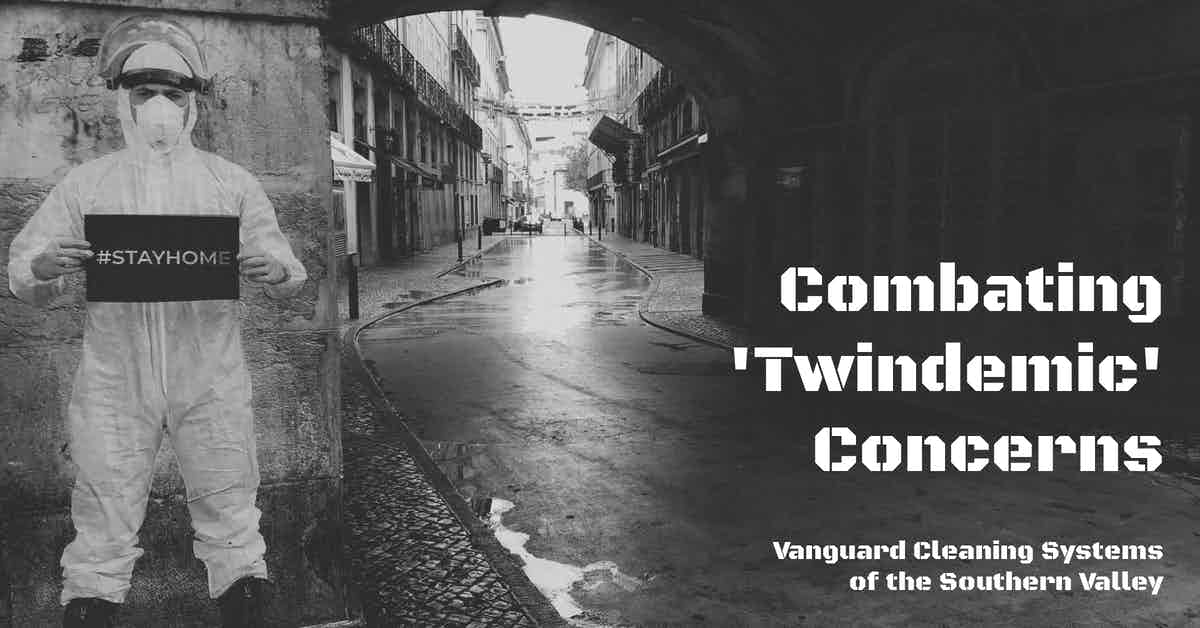Decreased social interaction may have helped thwart the spread of COVID-19, but the policy may have inadvertently increased the threat of a bad influenza season due to a lack of personal contact necessary to build immunities during a time of increased COVID transmission.

New Predictions of a Possible Twindemic
The combination of:
- A nearly non-existent 2019-2020 influenza season due in large part to lockdowns and social distancing.
- The relaxation of social distancing and mask mandates.
- An increase in "away from home" activities, and;
- The emergence of a COVID variant (Delta) that appears to be more transmissible than previous iterations;
has created a situation where an increase in influenza and COVID illnesses is possible.
Compounding the issue--those affected may not be able to differentiate the two, resulting in a potential overburdening of the healthcare system.
According to Jessica Dixon, a WakeMed infection prevention specialist;
It appears that a lot of the things we did to mitigate COVID are exceptionally good at mitigating the spread of influenza, and so we didn’t have much of a flu season last year.
It’s reasonable to expect a lot of flu.
We’re already seeing a relative explosion of other respiratory viral illnesses that we do see throughout the year just not normally as much in the summer as we are right now.
To make matters worse, it’ll be hard to differentiate COVID from the flu.
And there is the possibility for a "twindemic" – outbreaks of both viral diseases in the same population.
Fewer masks, climbing COVID cases could make flu season a 'twindemic'
Knowing the Difference Between COVID and Influenza
Knowing the difference between COVID and influenza symptoms can save time diagnosing illnesses, reduce the spread of infection, and potentially save a life.
COVID and the flu share several similar symptoms, including:
- Headache
- Muscle pain and body aches
- Fever or chills
- Coughing
- Difficulty breathing
- Fatigue
- A runny or stuffy nose, and;
- Sore throat
Additionally, COVID illnesses have several somewhat unique symptoms, including:
- A sudden loss of smell or taste
- Pain or pressure in the chest
- Confusion
- Bluish face or lips, and;
- An inability to stay awake or wake up
Influenza symptoms commonly arise within one to four days of exposure, while COVID symptoms can take anywhere from two days to two weeks but most commonly develop within five days.
If you develop symptoms and wish to know whether you are COVID or influenza-positive, the US Food and Drug Administration has approved a combination swab test that is available for over-the-counter purchase.
Additionally, at-home COVID swab tests are available for over-the-counter purchase, and many communities have local free-testing sites available that typically provide confidential results within twenty-four hours.
Enhanced Cleaning and Infection Prevention to Combat COVID and Influenza Transmission
COVID and influenza, while similar in certain regards, have different primary routes of transmission.
COVID predominantly transmits from person to person via airborne droplets expelled from a contagious person when they cough or sneeze.
Conversely, influenza is typically spread via contact with a contaminated person/dermal transmission, or with a contaminated surface/surface transmission.
While cleaning cannot possibly entirely halt the transmission of any illness altogether, the implementation of several cleaning methods, technologies, and protocols has been proven over the last two years to be highly effective at significantly reducing the presence and spread of the associated pathogens.
Prior to the onset of the influenza season, we recommend:
- Documenting available cleaning and disinfection products and supplies and then verifying their effectiveness against SARS-Cov-2 and influenza with the US Environmental Protection Agency.
- Identifying multiple vendors for all necessary cleaning, disinfection, and sanitary products in case of disruptions to transportation.
- Identifying emergency news sources regarding localized and community spread of COVID and influenza infections.
- Creating a cleaning checklist that addresses normal cleaning procedures, what to do in the event of an increase in the community-wide spread of either or both pathogens, and what to do in the event your facility is compromised with the infection.
- Purchasing and deploying commercial-grade air-cleaning and purification equipment, including MERV-13 or higher HVAC filters.
- Increasing indoor ventilation to disperse airborne particles.
- Keeping the restrooms in your facility spotless and well stocked with paper products and soap, and;
- Using targeted fomite disinfection throughout the day to maintain the sanitation and hygiene of commonly touched surfaces.
References & Resources
- How To Tell The Difference Between COVID-19 And The Flu
- FDA Authorizes First At-Home COVID-19 and Flu Combination Test
Takeaway
The increasing probability of an influenza and COVID-induced 'twindemic' at some point in the near future is concerning.
Organizations concerned about their occupant's health and safety, as well as the prospects for maintaining operational status in the coming months would do well to begin preparing now.
Outsourcing is a proven method for onboarding increasingly in-demand sustainable cleaning for health services, tools, and expertise for a fraction of the cost of maintaining a similar service in-house.
If you would like more information regarding the effectiveness of high-performance infection prevention and control measures, or if you would like to schedule a free, no-obligation onsite assessment of your facility's custodial needs, contact us today for a free quote!
In Bakersfield, CA, call (661) 437-3253
In Fresno, CA, call (559) 206-1059
In Valencia CA, or Santa Clarita CA, call (661) 437-3253
In Palmdale, CA or Lancaster, CA, call (661) 371-4756

